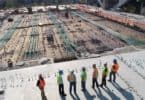When you need to estimate the cost of a project or parts of a project, you almost always come across the parametric estimation technique. This is a quantitative method for calculating the expected cost based on historical or market data.
The technique of parametric estimation is introduced in this article. We will also provide guidance and an example of how to use this method in practice.
What Is Parametric Estimating?
A statistics-based technique for calculating the expected amount of financial resources or time required to perform and complete a project, an activity, or a portion of a project is known as parametric estimation. It is a well-established method in several project management frameworks, including the PMI Project Management Body of Knowledge (PMBOK), where it is listed under the tools and techniques of the ‘estimate cost’ and ‘estimate activity duration’ processes.
An estimate is derived from a statistical (or assumed) correlation between a parameter and a cost or time value. This observed correlation is then scaled to the current project’s size. In highway construction, for example, the cost and time to build one mile in a previous project could be used to calculate the resources and schedule of the current construction project. This, however, requires statistical evidence of the correlation and that the characteristics of both projects are comparable).
A set of historical data is required to calculate the cost or duration per parameter. This could be obtained from previous projects (companies in the construction, consulting, IT, and other industries sometimes centrally store such data), publicly available market data, or agencies that provide benchmarking statistics.
While parametric estimation is a common technique for estimating costs at various levels of granularity, the manner in which it is implemented varies greatly.
Some projects create complex statistical models and run extensive regression analyses on a variety of parameters. They may also create algorithms and devote significant resources to deploying and (back)testing such models. This is an approach appropriate for large projects, or so-called “megaprojects,” where even minor errors in estimate accuracy can have a significant impact.
Smaller projects, on the other hand, can use parametric estimation by developing functions or simply applying the ‘rule of three’ if there is evidence or a reasonable assumption that observed parameters and values correlate. This may also necessitate some expert judgment in determining whether the assumed regressions are reasonable and applicable to the project or activity.
According to PMI’s Practice Standard, there are 2 types of results:
- Deterministic and
- Probabilistic estimates.
Deterministic Estimates
The parametric estimation’s deterministic result type is a single number representing the amount of cost or time required, calculated using parametric scaling. It is occasionally manually adjusted to account for differences between current and historic projects (for example, different levels of experience of the teams) or to include a contingency reserve.
Probabilistic Estimates
This result type does not generate a single estimate, but rather a range of estimates based on the probability of various cost and duration amounts. This is frequently represented in the form of a probability density curve, as shown in the chart below.

The identification of three points on that curve is one method for converting this function into a more practical range of estimates:
- The most probable estimate, which is usually the cost or time value with the highest single probability,
- The pessimistic, and
- The optimistic estimate.
The optimistic and pessimistic cost and duration estimates can be determined by assigning a target probability (e.g., 90%, 95%, or 100%, depending on the quality of the underlying data and the type of value distribution) and/or a multiplier to their standard deviations. These three points, depending on the shape of the probability density curve, can then be transformed into a so-called final estimate, in a manner similar to the triangular or PERT beta distributions.
How to Perform Parametric Estimating?
This section describes the steps needed to perform a parametric estimation. As mentioned before, the extent and complexity of the estimating process and the deployed tools should be tailored to the needs of a project. In the below steps, we have added a note where we would expect differences between small and complex projects.
Determine which parts of your project can (potentially) benefit from parametric estimation
As a first step, a project manager must determine which parts of the work must be completed. The primary selection criteria are:
- Required level of accuracy, i.e. you may be able to estimate the entire project at once (e.g. building cost per square foot) for a rough estimate, but for definitive estimates, you will need to go into greater detail.
- Correlation of parameters and values, i.e. you can only estimate work or resources using this technique if you know or believe there is a relationship between a parameter and the duration and/or cost (subject to testing).
- Availability of data for parametric estimation
The work breakdown structure (WBS) can be a good place to start when deciding on the scope of parametric estimation.
Research Historic and Market Data on the Cost and/or Time Requirements of Similar Projects
If you’ve identified areas where parametric estimation might be useful, you’ll need to collect the necessary data. Internal cost/time/resource databases fed with observed values from previous projects (often available in companies that work on certain types of projects on a regular basis) are potential data sources, as is publicly available data such as public statistics or industry benchmarks.
Identify the Parameters that You Wish to test for Correlation with the Cost or Time Values
Once you have a set of data, you must select the parameters that may or may not correlate with the cost or time requirements. If you’re using a model, these correlations will be subjected to additional statistical analysis.
In smaller projects, you’d probably use your best judgment or common sense to determine which parameters are reasonable. If this meets your project’s requirements, you can skip the next two steps and proceed to the calculation section.
Determine the Parameter(s) that Drive Cost or Durations
Correlations and/or regressions should be tested for the set of parameters identified in the previous step. Statistical software, such as R, or other free or commercial solutions, will typically be used. Artificial intelligence (machine learning) can also be considered, for example, to identify patterns in large datasets. Select the parameters that are appropriate for your estimation model at the end of the analysis.
Develop a Model and Perform (Back)testing if Possible
Create a model that predicts the cost and duration of your project based on the parameters identified in the previous step. Make sure to compare the results to historical data.
It should be noted that this step necessitates statistical knowledge and data analysis experience. In reality, these models can be quite complex, especially for large projects. So, be aware of the costs, time, and resources required to develop such a model. In terms of estimation, balance this against the potential benefits and the needs of the project and its stakeholders.
Compute the Parametric Estimation
If you’ve created a model, you’ll use it to calculate a probabilistic or deterministic estimate based on the parameters of the current project.
If you used expert judgment rather than a model to identify the relevant parameters, you must first compute the cost or time per parameter unit.
You can then create and apply a cost or duration function that takes these parameters into account as independent variables. If you enter the parameters for your current project, the result is a cost or duration estimate (deterministic) for this project.
The parametric estimation, in its most basic form, consists of only one parameter and a linear relationship between the parameters and the amount of cost or time. In this case, apply the ‘rule of three’ calculation by multiplying the cost or duration per parameter unit by the value of the parameter in your current project. The formula is as follows:
E_parametric = a_old / p_old x p_curr,
where:
E_parametric = parametric estimate,
a_old = historic amount of cost or time,
p_old = historic value of the parameter,
p_curr = value of that parameter in your current project.
A few examples can be found in the section below. These parametric estimating examples are also based on the ‘rule of three’ approach.
Read also: Guide To Rough Order of Magnitude Estimate









